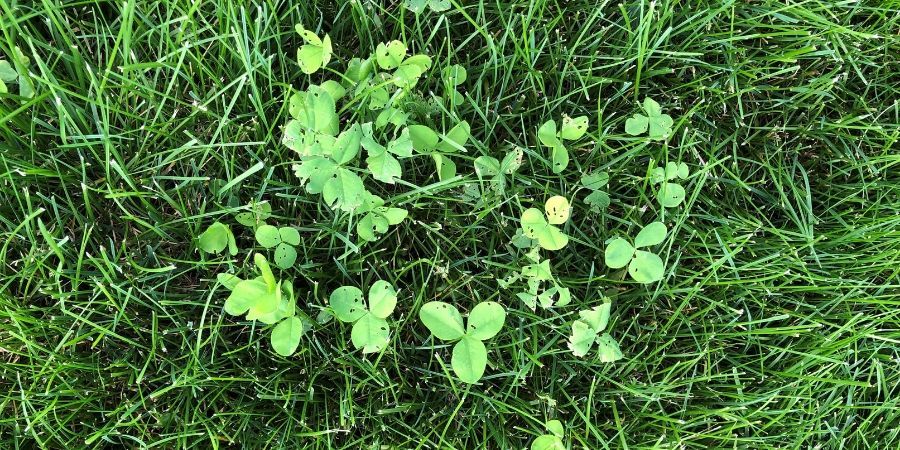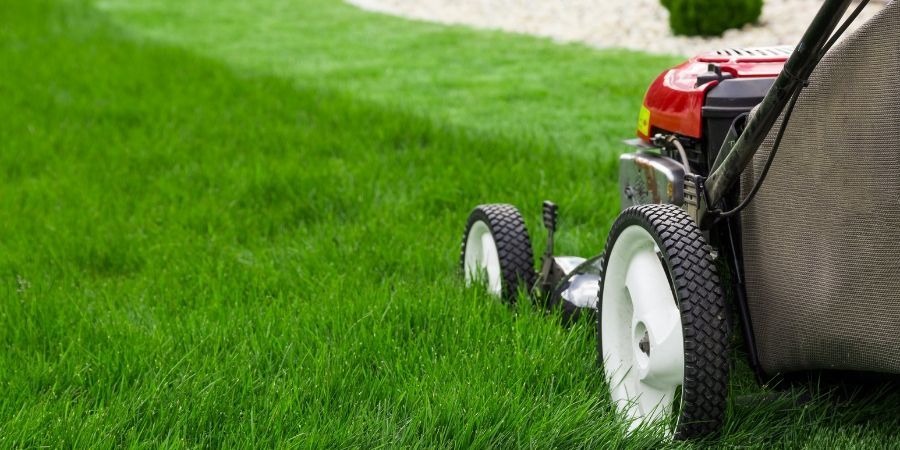How to Get Rid of Clover in Your Lawn
- Milorganite AgronomistJuly 27, 2019
Shamrock, a type of clover, has become the symbol of St. Patrick’s Day and Ireland. Finding the infrequent four-leaf clover is said to bring good luck to the finder. But for many homeowners, common clover in the lawn is simply a nuisance and can make lawns look messy.
Here’s a brief history of how clover originally ended up in our lawns and some tips on how to get rid of it.
What is Clover?
Clover (Trifolium) is a perennial, broadleaf weed common throughout the U.S. It has three characteristic, round leaflets on a long stalk and small, round white or pinkish/purplish flowers. Clover is a legume in the pea family and related to alfalfa. Legumes have the unique ability to fix nitrogen in the air and soil, creating its own fertilizer, which is why it was originally added to grass-seed mixes for easier-to-maintain lawns. It’s more resilient than other broadleaf weeds, drought-tolerant and its low-growing habit evades mower blades. It can quickly spread.

Why is Clover in My Lawn?
Prior to the 1950s, a standard practice was to add clover seed to lawn-seed blends. Clover effectively competed with other weeds and provided a fairly low-maintenance lawn by providing nitrogen to the grass. Some grass seed blends today continue to include clover seeds.
The suburban, middle class, along with single-family homes with carpets of lawn, grew significantly after World War II. Some of the chemicals developed during the war were now becoming available commercially to homeowners. The first residential herbicides were available in 1945 and was used to kill broadleaf weeds, which includes clover. This made it more convenient to eliminate clover from lawns than promote it.
Although we’re seeing a trend to again introduce clover to lawns, most homeowners continue to prefer the clover-free, weed-free lawns that have been in vogue for the past seven or eight decades. These folks want to kill clover in their lawn.
How to Get Rid of Clover in Your Lawn
Remove clover as soon as you see it. It can spread quickly by seed and creeping stems. If the amount of clover in your lawn is minimal, it’s best to remove it by hand. Loosen the soil to make it easier to remove the entire clover root. If there’s more clover than is practical for hand removal, consider spot treating with an herbicide.
If you decide to treat the entire lawn, a broadleaf herbicide application in fall is very effective. Make sure the herbicide is safe to use on your variety/ies of grass, otherwise you may kill the grass along with the clover. Always follow manufacturer instructions and community regulations.
Improve Soil Fertility
Clover grows well in nutrient-poor soils and is an indication that the soil lacks fertility, particularly nitrogen. It doesn’t need fertile soil to grow, because it’s able to fix its own nitrogen from the air and soil.
The best way to prevent clover, like other weeds, is to maintain a healthy, thick lawn that crowds out weeds. Use a quick-release nitrogen fertilizer to immediately help restore soil fertility. Fertilize regularly with a slow-release fertilizer, such as Milorganite, to maintain soil fertility.

Continue to Cut Grass at Its Optimal Length
It’s the middle of summer, your grass is likely growing rapidly and you may be looking for a time-saving short cut by cutting your lawn shorter. Don’t be tempted to lower the blades of your mower so you don’t have to mow as often. Short grass allows more sunlight to reach clover, and other weeds and weed seeds.
Cut to the proper length for your grass variety/ies. Use the one-third rule for cutting your lawn: never remove more than one-third of the leaf blade in a single cutting. Grass length effects root depth. Longer grass produces longer roots, making it more resistant to weeds and more difficult for clover roots to take over.
Overseed for Thicker, More Weed-resistant Lawn
Overseeding produces a thicker lawn that’s better able to resist weed invasions. Choose a grass species or a blend appropriate for your climate and growing conditions. All grass seed must include an analysis that indicates the percent of weed seeds present. Choose high-quality seed with little or no weed seeds.
When overseeding, use four (4) parts Milorganite to one (1) part grass seed by weight and distribute using a spreader. The Milorganite makes it easier to see where the tiny seeds have been distributed and provides an initial fertilization that’s guaranteed to not burn the lawn or emerging seedlings.

